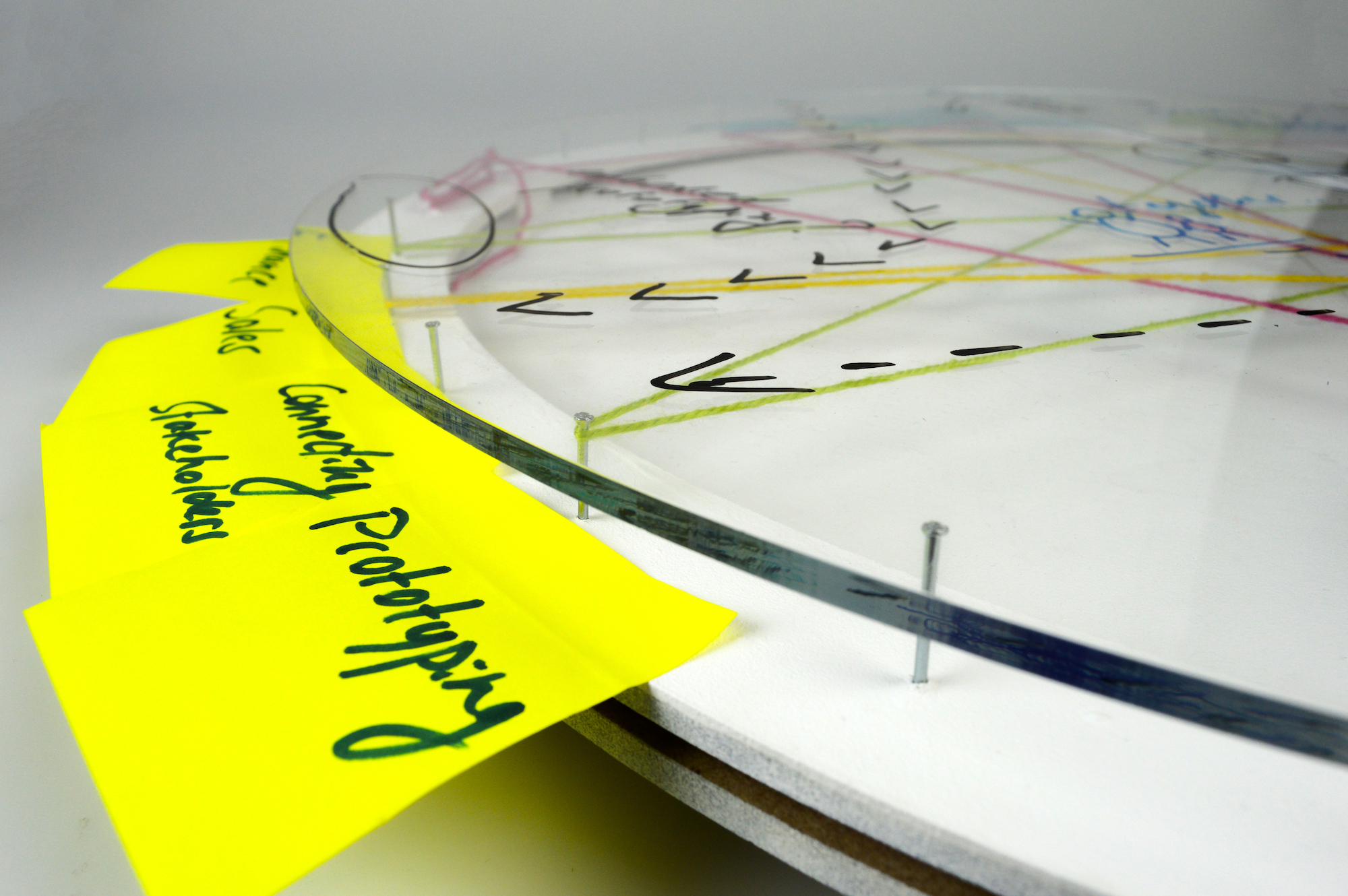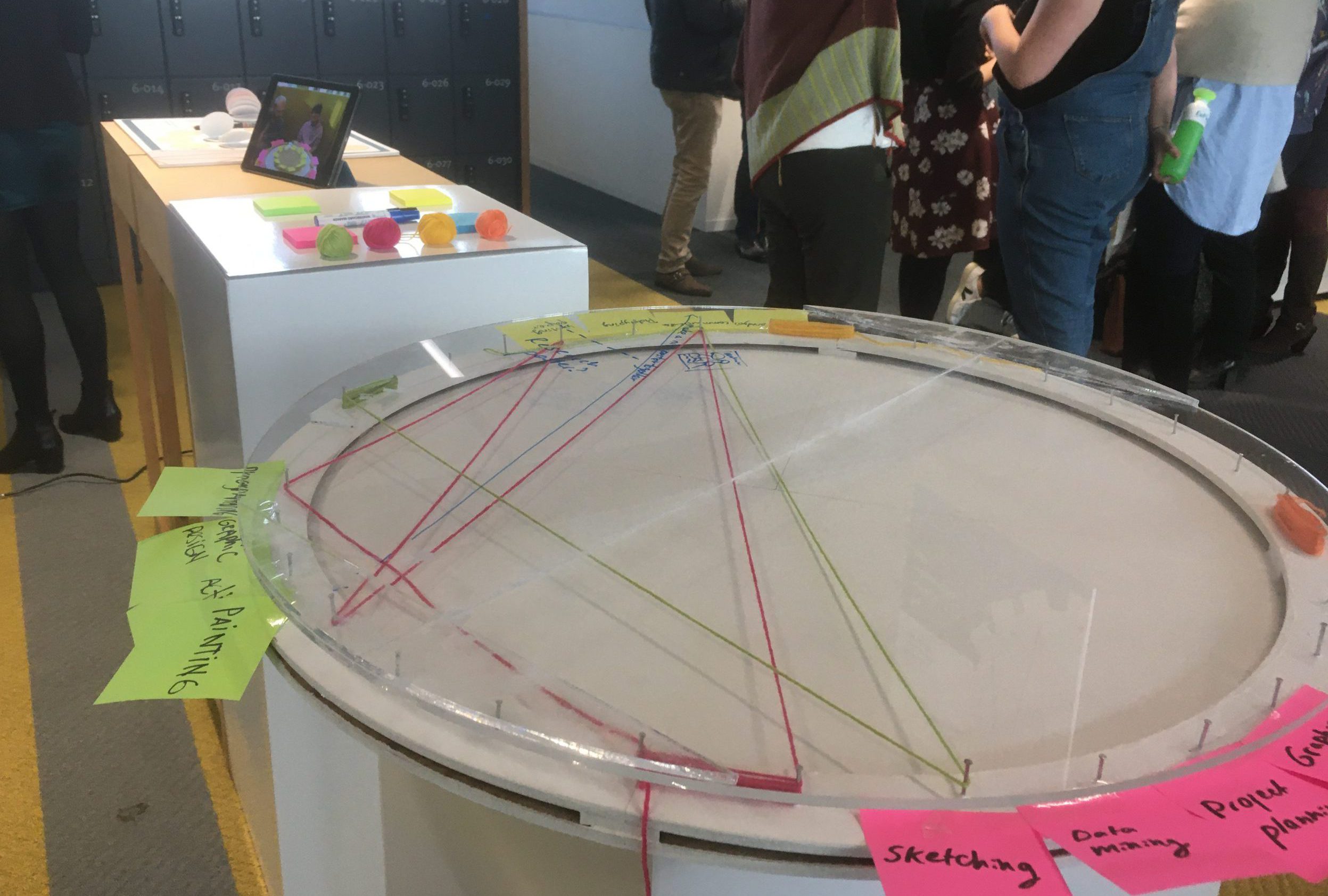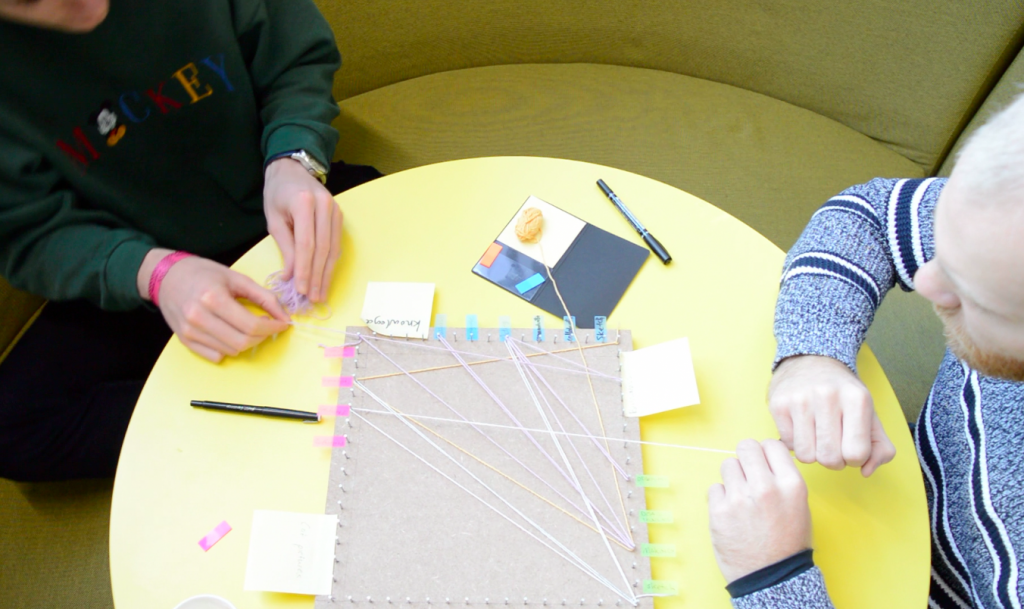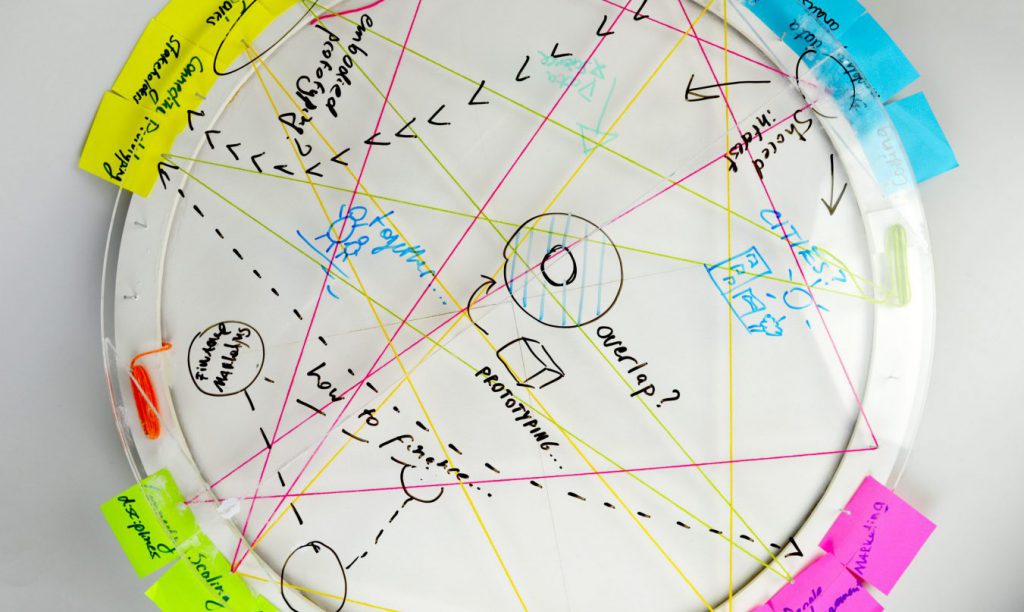ROUNDTABLE
A Collaborative Tool for Multidisciplinary Stakeholders
Social Innovation | Social design, entrepreneurship, design theories
Stakeholder: Brabant Outcome Fund (BOF)
Team: Jing-cai Liu, Sacha Prudon, Nick Voskuil
Background
The main challenge of this project was to design a tool that can be used by the Brabant Outcomes Fund (BOF). They are a social investment fund dedicated to guiding the growth of several different startups in the social domain. The BOF is an organization providing a connection in shared beliefs and values between investors and social ventures. Often, the stakeholders have completely different disciplines and backgrounds which result in challenges concerning collaboration. Consequently, we see the opportunity to design for the enhancement of initiating transdisciplinary collaboration [1] within the BOF organization.
Iterative designs
Among techniques such as sketching, mapping, and regular discussion in order to communicate, we did an embodied sketching [2] session to explore our meaning of collaboration. Through this technique, we experienced what could be valuable elements in transdisciplinary collaboration within a transformative practice [3]. The iterative designs of the collaboration tool arose from this embodied experience. We want to accomplish a similar goal by connecting stakeholders and enhance engagement by embodied “doing” processes. With these tools, we strive to stimulate a bodily and sensing approach with the intention to let stakeholders open up, learn, and find meaning through interaction in the physical.
Exploration with a square board with nails along the edges. Each stakeholder could write down their needs and skills and use colored wires to connect these on the board. Through using this, each stakeholder could find each other's skills and interested in withing a collaboration project. Also, the embodied sketch allows collaborators to interact and engage in a fun way to connect to one another.
The second iteration is improved with a round shape. This version could be used with either wire, as previously done, or by drawing lines with markers on paper. A test is done with a group of participants who don't know each other and a fictional project is set for the group. This first user test sparked several interesting insights concerning the use and value of our concept. The participants noted that they felt invited and free to speak about their possible contribution to this fictive project. It seems that the setting of the test and the use of the tool sparked quite a lively conversation.
In the final design, another layer is added to this previous concept. The added layer enabling meta-analyses is transparent and enables stakeholders to write on it with markers above the layer with the connection wire connections. This layer aims to make the discussed topics concreter. Stakeholders could draw and place a concrete plan on top.






